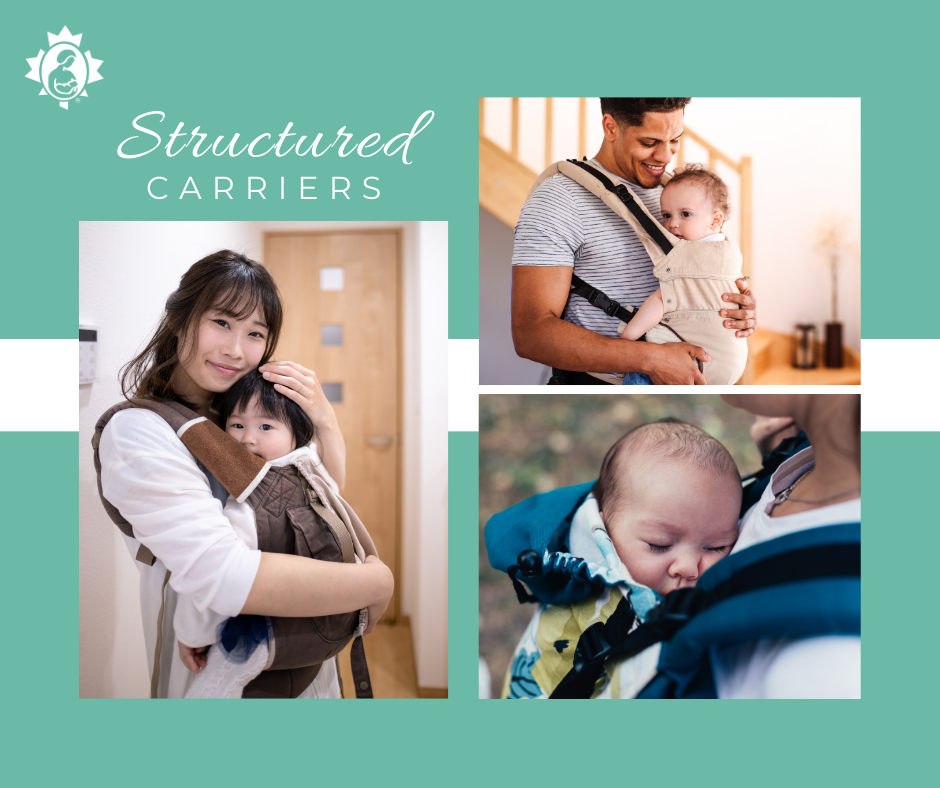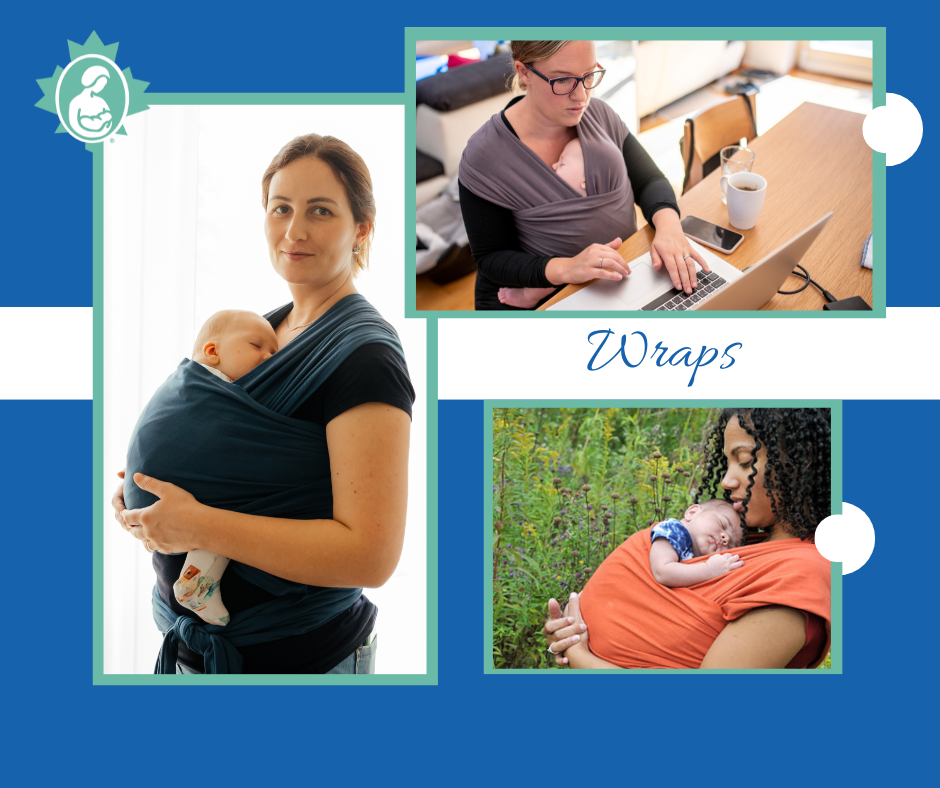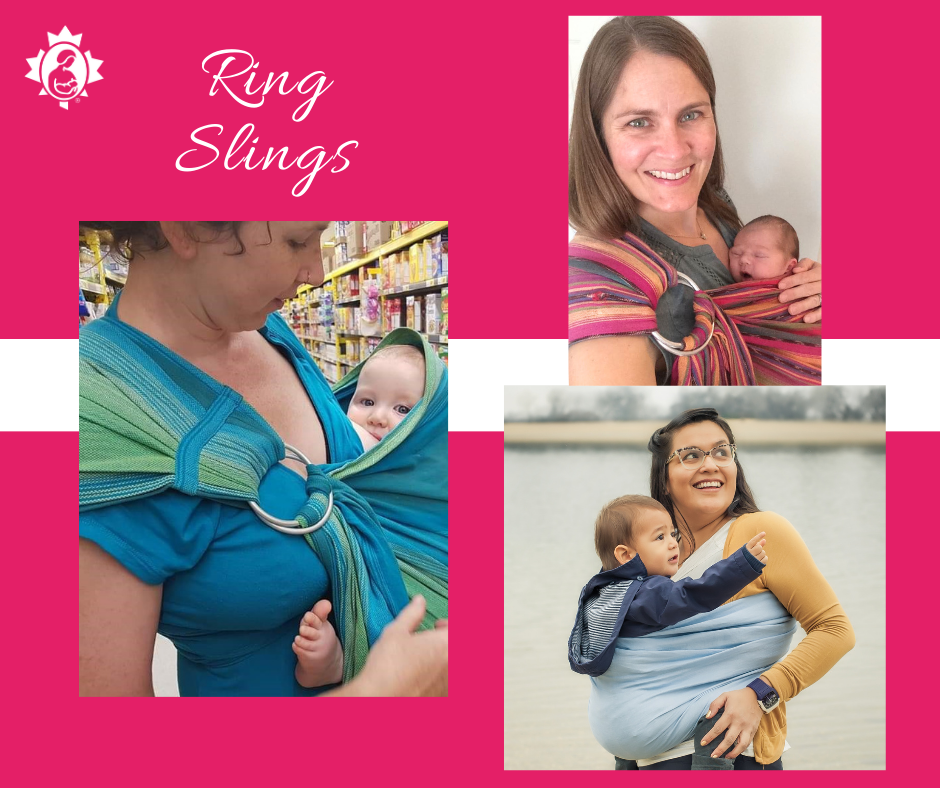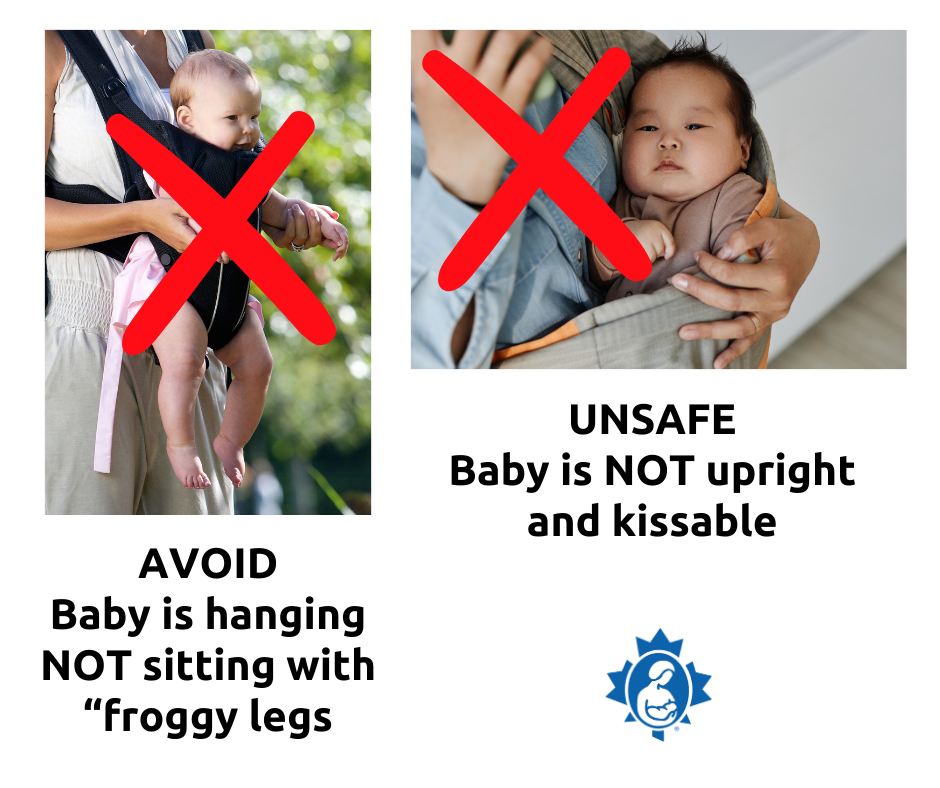Carrying your baby in a safe baby carrier is called ‘babywearing’.
- Babywearing meets your baby’s need to be close to you.
- It also frees your hands to do other things while caring for your baby.
- Your baby can be worn skin to skin in the carrier, or with clothing on.
- Babywearing can be done by your partner and other trusted adults, too.
There are several different kinds of baby carriers including ring slings, wraps, and structured carriers. It is important to use a carrier that supports your baby’s proper hip development. Your baby should sit in the carrier with his weight on his bum. His legs should be in a “froggy” position with his knees slightly higher than his bum. Carriers in which the baby hangs from his pelvis should be avoided. It can be helpful to practice when your baby is awake and calm.




